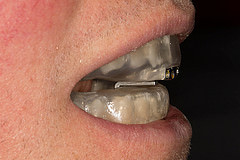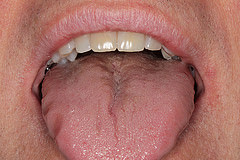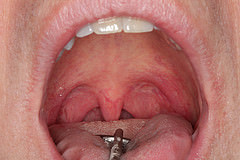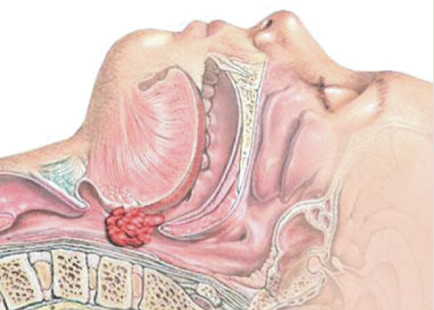This patient had been diagnosed with Moderate OSA (Obstructive Sleep Apnea), meaning he would stop breathing in his sleep between 15-30 times an hour. His physician fitted the patient for a C-PAP but the patient did not tolerate it well, due to the leaking around the face mask.
Oral exam shows two very common clinical signs of possible airway obstruction: crenated (scalloped) tongue and redundant (low-hanging) soft palate.
With the physician’s approval for alternate treatment, we measured and fitted the patient for an OAAT (Oral Airway Appliance Therapy), to bring the lower jaw forward – by also bringing the base of the tongue with the jaw, the throat is opened from the forward posture. Of importance to most patients is to still have the sense of being able to close the lips around the appliance.
The success of this appliance has been tested and confirmed to reduce the average hourly apneas to under 5 episodes/hour. We have followed his success for a year, and will continue to do so on an annual basis.




